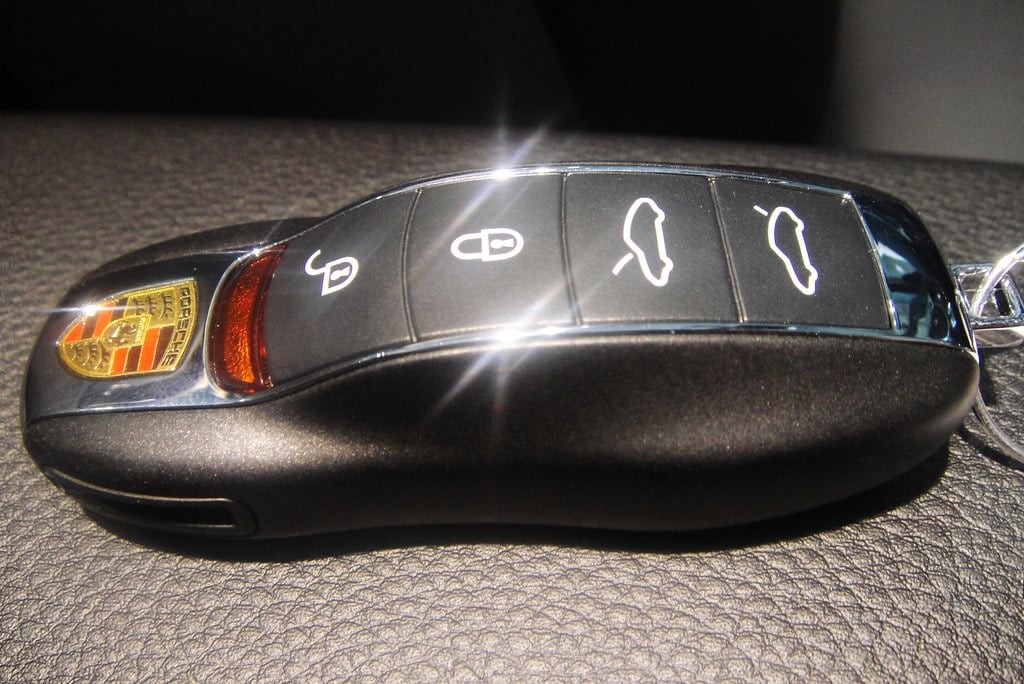Key fobs have become an indispensable part of modern car ownership, offering convenience and security by enabling remote locking, unlocking, alarm activation, and even starting your vehicle from a distance. These electronic car keys, however, are not immune to technical hiccups. Signal loss or electronic glitches can sometimes render your key fob unresponsive. Fortunately, in many cases, you can reprogram your key fob yourself, potentially saving time and money compared to seeking professional help from an auto locksmith or dealership.
This guide provides a detailed walkthrough on how to program a key fob to your car. While the following steps offer a general approach, it’s crucial to understand that specific procedures can vary significantly between car manufacturers and models. Always prioritize consulting your vehicle’s user manual for the most accurate and model-specific instructions.
 Car Key Fob Programming Process
Car Key Fob Programming Process
Understanding Key Fob Programming
Before diving into the programming steps, it’s helpful to understand why key fobs sometimes need reprogramming and the general process involved. Key fobs communicate with your car’s computer system via radio signals. When the car’s computer loses sync with the key fob’s signal, or when you replace a key fob, reprogramming becomes necessary to re-establish this communication.
There are typically a few methods for key fob programming:
- On-board Programming (Manual Method): Many vehicles allow you to program key fobs directly using a sequence of actions involving the ignition, doors, and key fob buttons. This guide primarily focuses on this method.
- Professional Programming (Locksmith or Dealer): For some vehicles, especially newer models with advanced security systems, on-board programming might not be possible. In these cases, specialized equipment and software are required, usually necessitating the services of a qualified auto locksmith or dealership.
Step-by-Step Guide to Program Your Key Fob (General Method)
The following steps outline a general procedure for on-board key fob programming. Remember to always refer to your vehicle’s user manual for precise instructions.
STEP 1: Prepare for Programming
- Gather Your Materials: Ensure you have your car’s ignition key and the key fob(s) you wish to program. Have your vehicle’s user manual readily available if needed.
- Enter the Vehicle: Sit in the driver’s seat and close all doors securely. This is important for the programming sequence to work correctly.
- Locate the Ignition: Familiarize yourself with the ignition switch. You’ll need to quickly turn the key to specific positions without starting the engine in most cases.
STEP 2: Initiate the Programming Sequence
- Turn the Ignition to ‘ON’ Position: Insert your ignition key into the ignition switch and turn it to the “ON” position. This position is usually just before the point where you would start the engine. Do not start the engine.
- Press the Key Fob ‘Lock’ Button: Locate the ‘lock’ button on your key fob. Aim the key fob towards the car’s transmission receiver. This receiver is often located in the front of the car, near the rearview mirror, but again, your manual will have specifics. Press and hold the ‘lock’ button for a few seconds.
STEP 3: Complete the Programming Cycle
- Turn the Ignition ‘OFF’: Quickly turn the ignition key back to the “OFF” position and remove the key from the ignition.
- Observe for Confirmation: In many vehicles, you should hear the car locks cycle (lock and unlock) to indicate successful programming. This auditory cue confirms that your car has recognized the key fob’s signal.
STEP 4: Program Additional Key Fobs (If Necessary)
- Repeat Immediately: If you have multiple key fobs to program, repeat Steps 2 and 3 immediately for each additional fob. Many car systems will erase previously programmed fobs when a new one is programmed, so programming all fobs at once is crucial. Work quickly and without delays between programming each fob.
STEP 5: Test Key Fob Functionality
- Test All Buttons: After programming all key fobs, test each fob to ensure all buttons (lock, unlock, trunk, alarm, etc.) are working correctly. Walk a short distance away from the car and test the remote start function if your vehicle is equipped with it.
When to Consult a Professional Locksmith or Dealer
While on-board programming is effective for many vehicles, there are situations where professional assistance is necessary:
- Programming Fails: If you follow the steps in your user manual carefully and the key fob still doesn’t program, there might be an underlying issue with the car’s receiver, the key fob itself, or the programming method may be incorrect for your specific model.
- Advanced Security Systems: Newer vehicles often have sophisticated anti-theft systems that prevent DIY key fob programming. In these cases, only a locksmith or dealer with specialized diagnostic tools can program new key fobs.
- Lost or Stolen Key Fobs: If you’ve lost all your key fobs or suspect one was stolen, it’s crucial to have a professional locksmith or dealer not only program new fobs but also erase the lost/stolen fob from the car’s system to prevent unauthorized access.
Conclusion
Programming your key fob can often be a straightforward process that saves you a trip to the mechanic. By understanding the general steps and, most importantly, consulting your vehicle’s user manual for model-specific instructions, you can often successfully reprogram your key fob yourself. However, don’t hesitate to seek professional help from a qualified auto locksmith or dealership if you encounter difficulties or have a vehicle with advanced security features. They possess the expertise and tools to handle more complex key fob programming needs and ensure your car remains secure and accessible.